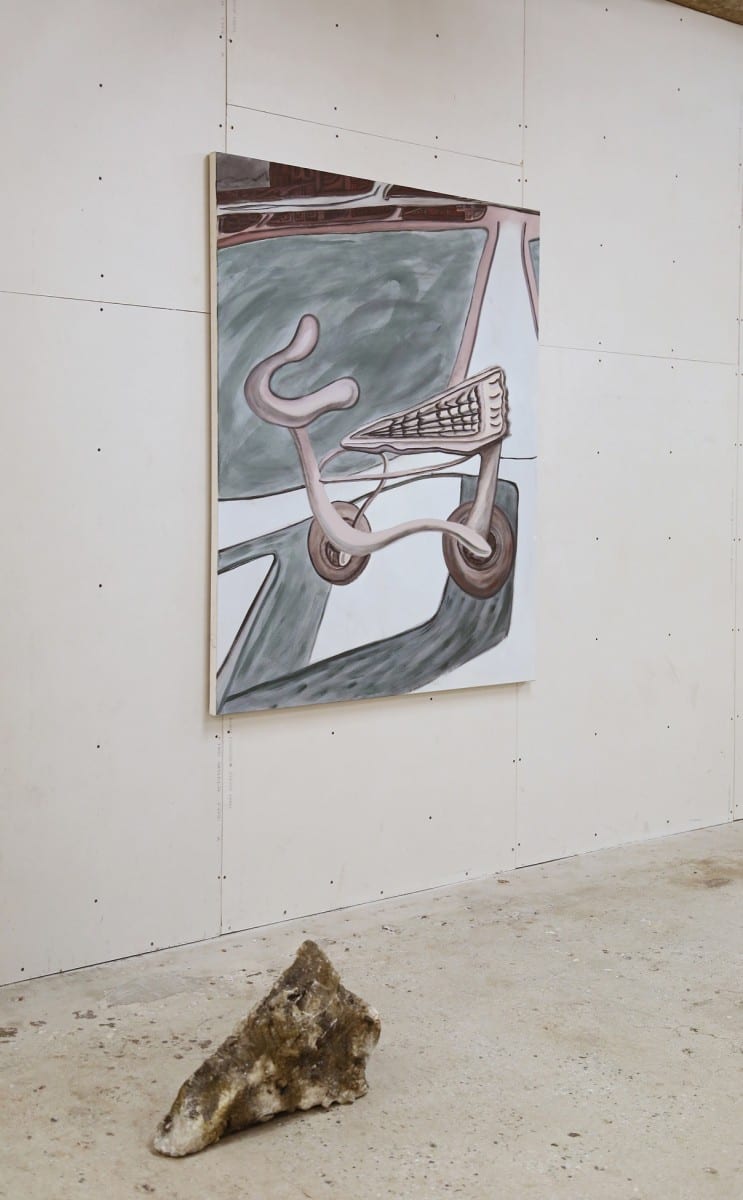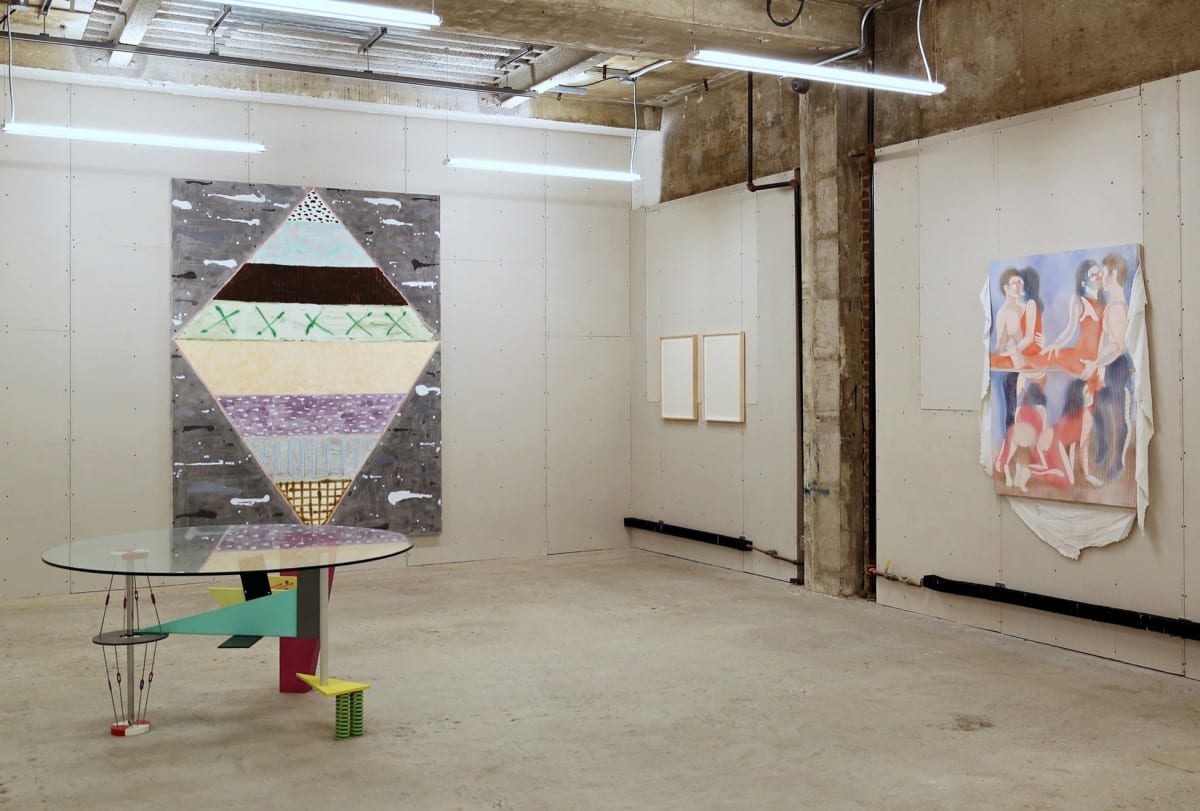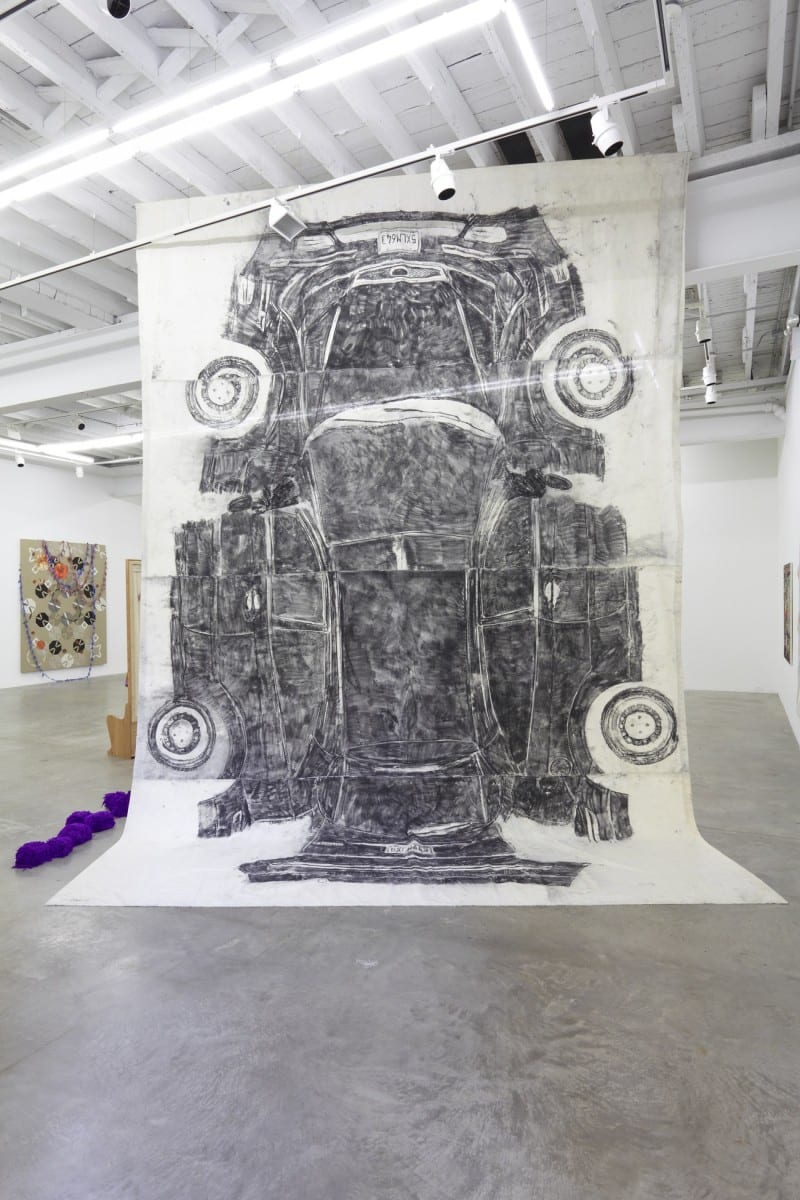Los Angeles appears to me to be a place that is constantly made and remade in its own image by its inhabitants daily. It is very young, very American, with a short memory and an open invitation to fantasy and invention. Artist and co-curator of Made in Space Peter Harkawik describes the journey of bringing an exhibition of 32 artists together at Gavin Brown’s Enterprise and Venus Over Manhattan in New York City.
Take a curated view inside the exhibition and discover the works of Lucas Blalock, Derek Boshier, Jedediah Caesar, Joshua Callaghan, Vanessa Conte, Michael Decker, Gabrielle Ferrer, Laeh Glenn, Hannah Greely, Marcia Hafif, Peter Harkawik, Cannon Hudson, Jim Isermann, Patrick Johnson, David Korty, Liz Larner, Max Maslansky, Jesse Mockrin, Rebecca Morris, William Leavitt, Tala Madani, Josh Mannis, David Nemeroff, Eric Orr, Jorge Pardo, Marina Pinsky, Allen Ruppersberg, Asha Schechter, John Seal, Peter Shire, Mungo Thomson and Aaron Wrinkle.
Made in Space is a group show curated by Laura Owens and myself and it examines art being made in Los Angeles now. We began working on this show nearly two years ago, and around that time chose as a focal point an essay by Peter Schjeldahl that was published in 1981, in which he makes a short trip to Los Angeles and convinces himself of its cultural and intellectual impotence. His trip took place before MOCA, Eli Broad and countless now-established art schools that have transformed the city. Yet the ideas he and others set forth around that time have, for the most part, lingered and sometimes dominated the discussion from afar. Speaking for myself and as an artist, Los Angeles appears to me to be a place that is constantly made and remade in its own image by its inhabitants daily. It is very young, very American, with a short memory and an open invitation to fantasy and invention.
The show was first exhibited at Night Gallery in Los Angeles and we were then invited by Adam Lindeman to bring the show to New York City and subsequently expanded it into a two part show with the generous support of Gavin Brown. There is a prevailing notion that Los Angeles artists are simply a product of this image-obsessed, superficial world, and that Los Angeles art is overly “agreeable,” “colorful,” “easy” and “playful.” It was and is important for us as artists and as the organizers of this exhibition to challenge these lazy conclusions.





painted wood, hardware, 96” x 72” x 1”, 2013




There are 32 artists in the show. The process of growing the exhibition was not unlike an exquisite corpse, in that we began with a set of ideas and saw them changed and revised through each studio visit. I think there were certain more established artists who we had in mind early on, and we were actually very lucky because no artist turned us down. I was quite moved by the generosity we saw on the part of artists who already have an established presence in Los Angeles and Europe to engage with the structure of the show. I was very happy to see space presented self-consciously by many of the artists as a multivalent notion: interior, architectural, outer, personal, sculptural, pastoral, political, discursive, scientific, etc. Each of the artists were invited to contribute work to both venues at Gavin Brown’s Enterprise and Venus Over Manhattan and were encouraged to use the opportunity to showcase divergent or incompatible modalities within their practice. In my mind this was the opportunity — to provide in depth access to the complexity of these artists’ output rarely seen in soundbites. Several of the mid-career artists in the show work in ways that I have come to know in and around Los Angeles as both rigorously conceptual and almost encyclopedic. It was commensurately depressing to learn that they were primarily known for one small project or medium in New York. This was the challenge: to say, “there’s more to this work.”
Laura and I had rather divergent ideas about how to install the shows, which led to a very lively and complex process of grouping, coupling, decoupling, shuffling and editing the works on view. I learned a great deal from watching her approach to create flow and juxtaposition within the exhibition design. On my part, in my limited experience curating shows, the pleasure comes in the perversity of certain associations, and the idea that a curator can in a sense “abuse” the parameters of a work, or at least countermand the “appropriate” use of buffer and dead-space. I like to see works paired in a way to challenge one another; practices that seem to hail from different belief systems or praxis butted up against one another. This was my personal aim with respect to the two venues. I am hopeful that a viewer would see work in one space and not recognize the same artist at the other.

















Featured image: courtesy of the artists, Gavin Brown’s Enterprise and Venus Over Manhattan
